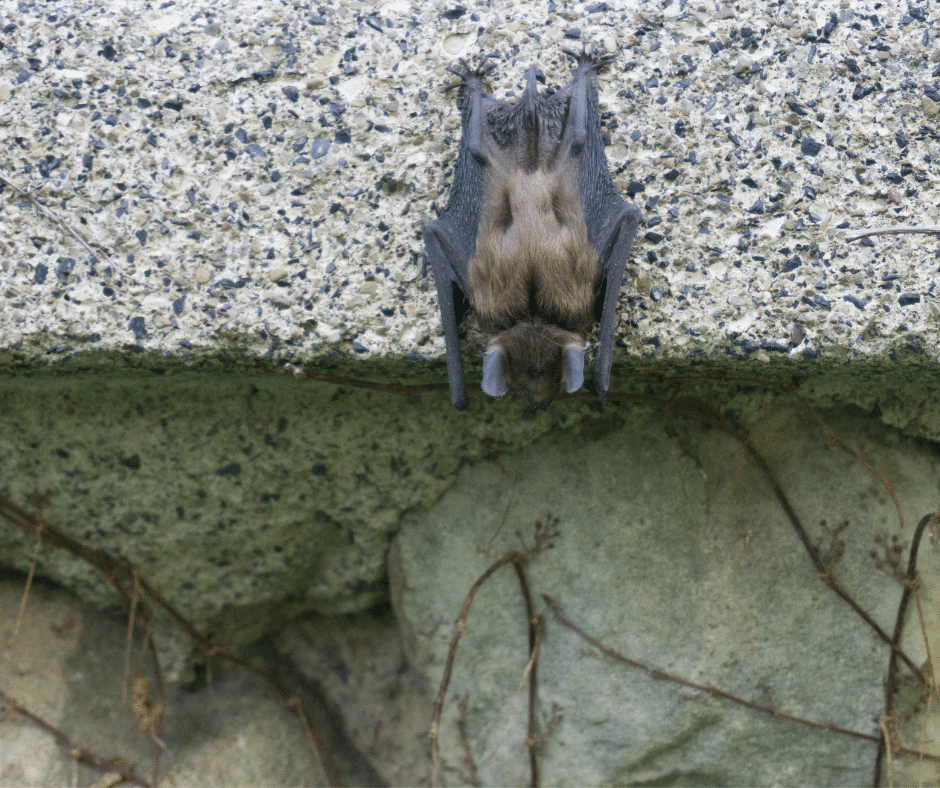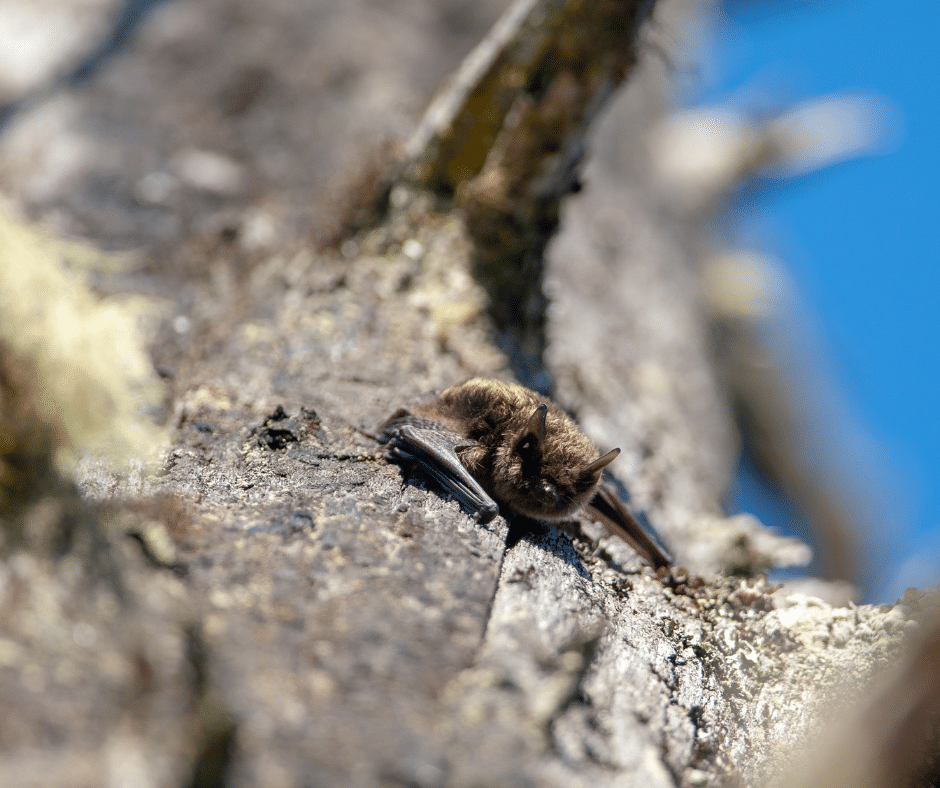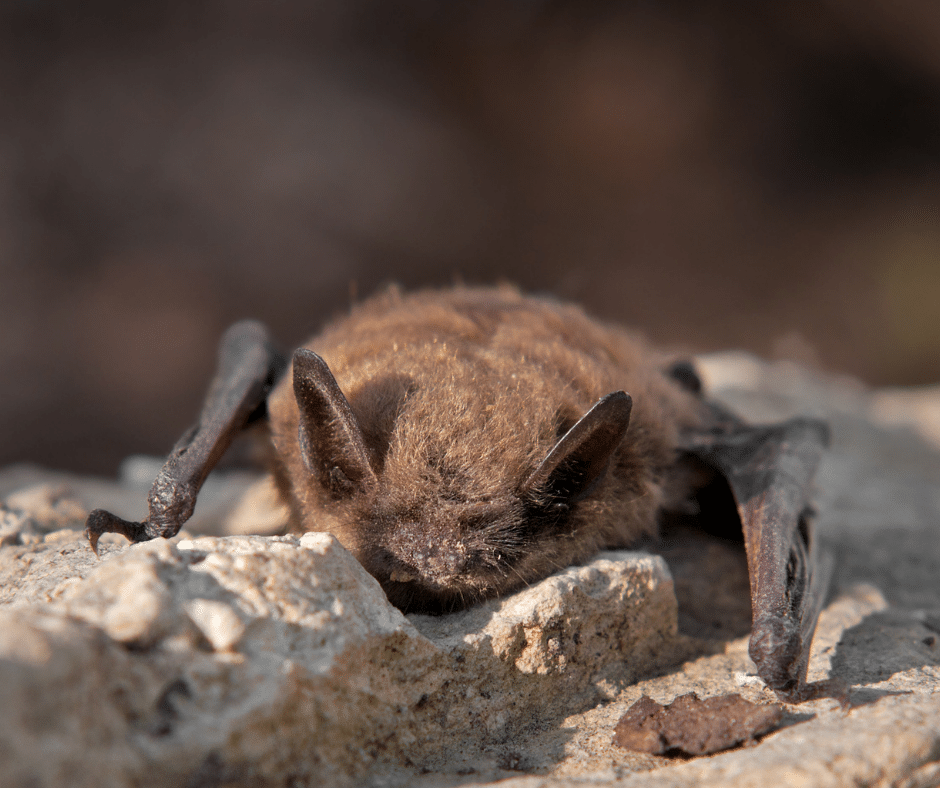Welcome to learning more about the Little Brown Bat. They are found coast to coast in the United States and Canada. And they can roost anywhere from your home’s attic to behind tree bark and in caves and abandoned mines. Although their population does not seem to be diminishing, there are two significant threats to the little brown bat.
- White-nose Syndrome
- The feral cat
Then there is the threat created by pesticide build-up, deforestation, and mining. But, other than those two, they are not under any conservation status, unlike the big brown bat.
White-nose Syndrome (WNS)
“Sadly, little brown bats are one of the three bats most threatened by White-nose Syndrome (WNS), a deadly fungal disease, caused by the fungus Pseudogymnoascus destructans.” This is a rapidly spreading fungus that is killing millions of bats. Clearly, it is a fuzzy white fungus that grows on the bats’ wings and noses. When their bodies attempt to fight off the fungus, it uses too much of the energy they need for hibernation, and they starve to death.
WNS disrupts the natural patterns of hibernation and waking. In fact, the bats used to hibernate in large roosts huddled together. Now only 10 to 1000 will roost together to avoid spreading to large numbers.
More research on why and what can be done about the spread of WNS is needed to help stop the little brown bats from eventually dying out.
The Feral Cat
Actually, both feral cats and domestic cats have become experts at catching bats since they live near homes, barns, sheds, and attics. In urban areas with many wild cats, the population will locate roots and prey on the bats.

Good News: They Are Natural Pest Eliminators
There is no doubt, bats eat bugs, and we mean tons of bugs. In fact, farmers are grateful to the bats in their areas because bats save them millions of dollars in pesticides per year.
Little Brown Bat Facts
Little brown bats are varied in color from golden, reddish, to brown, and even albino. Their fur is glossy, and the ventral side is a lighter color. The snout and wings are black and hairless. These bats are mammals with smaller ears and large hind feet with long hairs on the toes. Those muscular wings that are attached to their hands and legs are especially suited for their flight.
Oh, and the bat happens to be the only mammal that can fly. Besides, they are more maneuverable in flight than birds.
- Wingspan: 8 to 11 inches
- Weight: less than half an ounce
- Life Span: around 6 to 7 years
- Females are larger than males.

Little Brown Bat Behavior:
The Little Brown Bat is not territorial; they like to live in roosts together. And they will have multiple roosts for varied reasons. The little brown bat will travel miles between the day roosts, feeding site, hibernation, and gestation roosts.
Diet:
Bats are nocturnal, flying around at night and hanging in dark and secluded places during the day. You see, at night, they have fewer predators to contend with as they search for food. It only makes sense.
One of the most exciting bat facts remains how they use ultrasonic signals, called echolocation, to locate objects in the dark. Echolocation is how they navigate the world at night and look for food.
The Little Brown Bat is a big eater despite its size with a truly bottomless appetite. They prefer aquatic insects but will also dine on midges, mayflies, moths, beetles, and more. In fact, they will end up malnourished if they do not eat at least half their body weight each evening.
Reproduction:
Little Brown Bat mating season is in August, and mating is both random and promiscuous. Gestation lasts 2 months, and each mother has one pup per year.
Hibernation
When the little brown bat flies, its heart will beat over 1000 times per minute. However, when they hibernate, their heart will slow to 20 beats per minute, and they can go 30 minutes without even a breath. This state is called torpor, and they will emerge from torpor every 2 to 3 weeks. But it is unclear why they awaken when they really need to stretch their fat energy supply to last the entire winter.
Fun Fact: “During this time, the bats can withstand a temperature change of nearly 120 degrees Fahrenheit without suffering any damage.”
Little Brown Bat Damage to the Home
If a Little Brown Bat has nested in your attic, there can be extensive damage done. If they do manage to trap themselves in your attic, here is what you may see.
- Nightly noises such as clicking, popping, and scratching as bats move around.
- Large quantities of bat droppings (guano) in your attic or loft.
- A strong toxic smell that is like ammonia.
- Dark stains around small holes in your home.
- Bats flying from your home at dusk.
Worst of all would be the smell of the giant pile of urine and droppings. No one wants that from a colony of twenty Little Brown Bats. Bats typically are not alone, so if you see a solo bat in your home’s attic, there are most likely others hanging around.

Get Rid of the Little Brown Bat Infestation
You can trust the professionals at Covenant Wildlife Removal to get rid of the Little Brown Bats for good. They can do the patch and prevention work for you. Then they help to encourage the bats out safely and humanely, so they can relocate.
At Covenant Wildlife Removal, we will remove the bats, find the entry points and seal them up, and finally, clean up after them. We are fully equipped and experienced at getting to the source of the problem and eradicating the wildlife.
Little Brown Bat Removal Service includes:
- Exclusion
- Clean Up
- Disinfection
- Odor Removal
- Repair of the area
If you suspect you have bats in your attic or on your property, let Covenant Wildlife Removal assist you with bat removal. We are a top-rated local family-owned, full-service wildlife trapping, removal, and damage repair service company. Our professionals can remove a bat infestation before it becomes a massive problem for you and your family. And, we provide humane and safe bat removal services in Jefferson and Shelby counties. Contact us to set up an inspection.
Contact us or call 205-850-5760 to set up an inspection.
